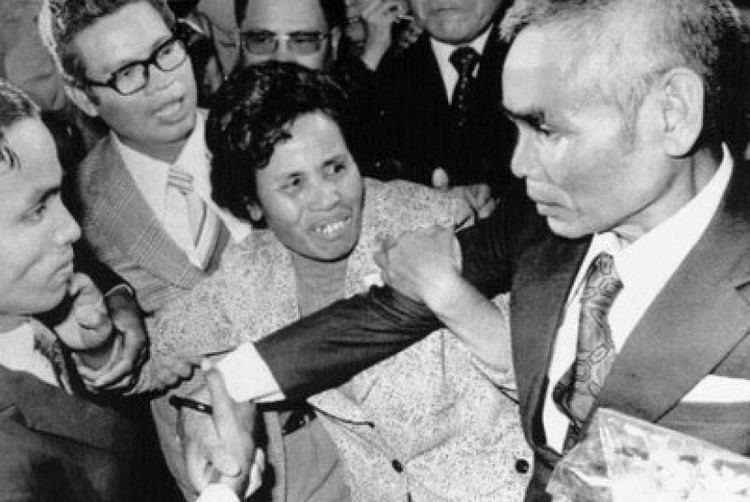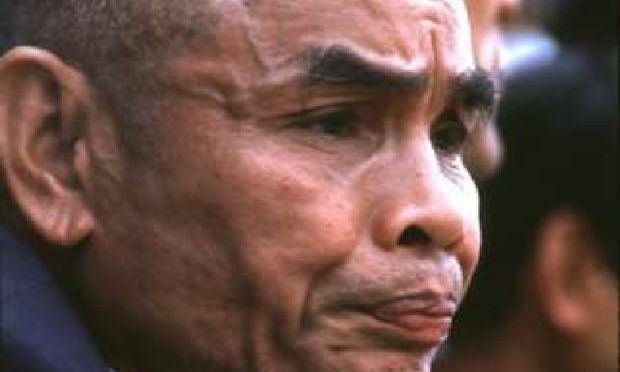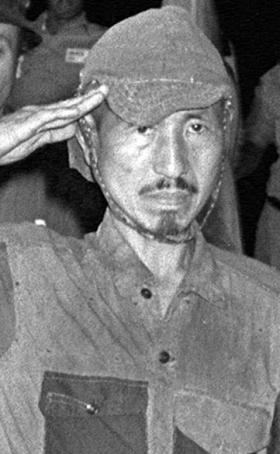Allegiance Empire of Japan Years of service 1943–1974 | Battles/wars Battle of Morotai Rank Private Name Teruo Nakamura | |
 | ||
Born October 8, 1919Taiwan, Empire of Japan ( 1919-10-08 ) Unit 4th Takasago Volunteer Unit 高砂義勇隊 Died June 15, 1979, Taiwan, Taiwan | ||
Battles and wars Battle of Morotai Service/branch Imperial Japanese Army Similar Norio Suzuki (explorer), Hiroo Onoda, Shoichi Yokoi | ||
モロタイ島の中村輝夫一等兵潜伏地 Lokasi Persembunyian Teruo Nakamura, Morotai
Sembunyi 30 Tahun Di Morotai
Private Teruo Nakamura (中村 輝夫, Nakamura Teruo, October 8, 1919 − June 15, 1979) was a Taiwan-born soldier of the Imperial Japanese Army from the indigenous Amis tribe, who fought for Japan in World War II and did not surrender until 1974. He is the last known Japanese hold-out to surrender after the end of hostilities in 1945.
Contents
- Lokasi Persembunyian Teruo Nakamura Morotai
- Sembunyi 30 Tahun Di Morotai
- Military service
- Discovery
- References

His name in his native Amis language was Attun Palalin. The Taiwanese press referred to him as Lee Guang-Hui (李光輝), a name of which he learned only after his repatriation in 1975.

Military service

Nakamura was an Amis aborigine from Taiwan. Born in 1919, he was enlisted into a Takasago Volunteer Unit of the Imperial Japanese army in November 1943. He was stationed on Morotai Island in Indonesia shortly before the island was overrun by the Allies in September 1944 in the Battle of Morotai. He was declared dead in March 1945.

After the capture of the island, it appears that Nakamura lived with other stragglers on the island until well into the 1950s, while going off for extended periods of time on his own. In 1956, he apparently decided to relinquish his allegiance with the other remaining holdouts on the island and set off to construct a small camp of his own, consisting of a small hut in a 20 x 30-metre fenced field.
Discovery
Nakamura's hut was accidentally discovered by a pilot in mid-1974. In November 1974, the Japanese Embassy in Jakarta requested the assistance of the Indonesian government in organizing a search mission, which was conducted by the Indonesian Air Force on Morotai and led to his arrest by Indonesian soldiers on December 18, 1974. He was flown to Jakarta and hospitalised there. News of his discovery reached Japan on December 27, 1974. Nakamura decided to be repatriated straight to Taiwan, bypassing Japan, and died there of lung cancer five years later in 1979.
Nakamura's repatriation and his perception in the Japanese public at the time differed considerably from that of earlier holdouts, such as Hiroo Onoda, who had been discovered only a few months earlier and who was both an officer and an ethnic Japanese. As a private of a colonial unit, Nakamura was not entitled to pensions after a 1953 change in the law on pensions, and thus received only a minimal sum of ¥68,000 (US $227.59 at the time, now US $1,100 in 2017). This raised a considerable outcry in the press, motivating the government to donate over $1,000,000NT..
